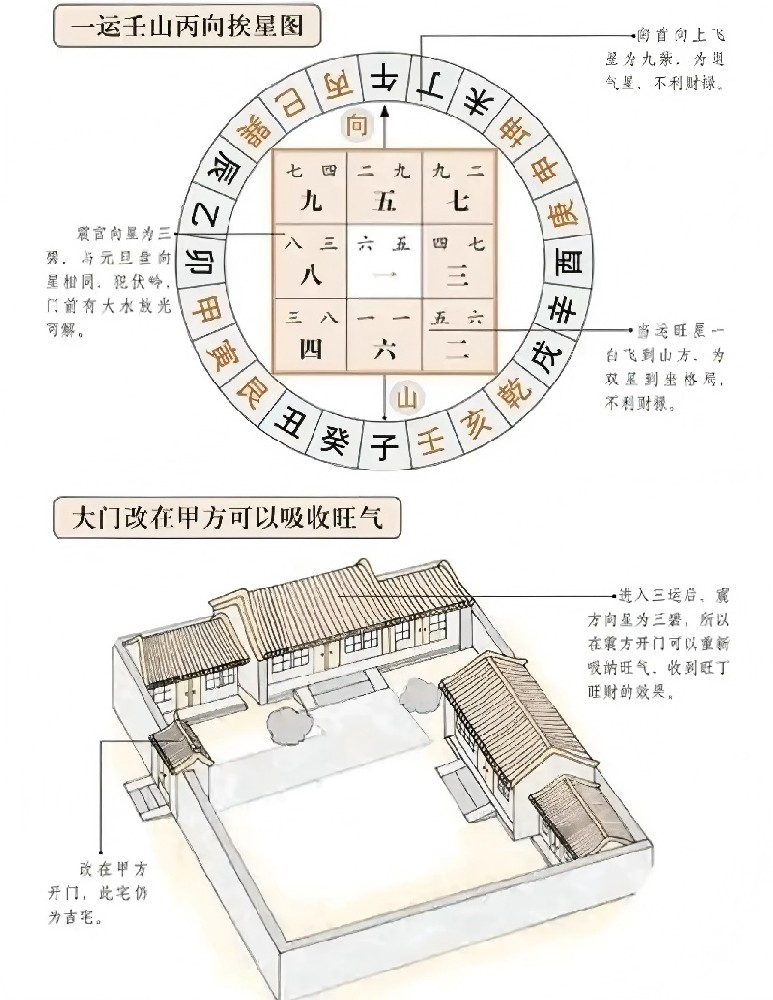倒装句分全倒装句和半倒装句。
一. 全倒装: 主语与谓语交换位置不需任何助动词, 叫全倒装。全倒装有以下三种情况:

1、当here, there, out, in, up, down等副词放在句首时, 句子需全倒装。
2、方位状语在句首。
3、直接引语在句首, 这种情况可倒装也可不倒装。
二.半倒装: 主语与谓语的助动词交换位置称半倒装, 有以下数种情况:
1、否定意义的词在句首, 句子半倒装。
2、几对并列连词如n
部分倒装是指将谓语的一部分如助动词或情态倒装至主语之前。如果句中的谓语没有助动词或情态动词,则需新增助动词do, does或did,并将其置于主语之前。
1) 句首为否定或半否定的词语,如no, not, never, seldom, little, hardly, at no time, in no way, not until… 等。
Never have I seen such a performance.
Nowhere will you find the answer to this question.
Not until the child fell asleep did the mother leave the room.
当Not until引出主从复合句,主句倒装,从句不倒装。
注意: 如否定词不在句首不倒装。
I have never seen such a performance.
The mother didn't leave the room until the child fell asleep.
典型例题
1) Why can't I *** oke here?
At no time___ in the meeting-room
A. is *** oking permitted B. *** oking is permitted
C. *** oking is it permitted D. does *** oking permit
答案A. 这是一个倒装问题。当否定词语置于句首以表示强调时,其句中的主谓须用倒装结构。 这些否定词包括no, little, hardly, seldom, never, not only, not until等。本题的正常语序是 Smoking is permitted in the meeting-room at no time.
2) Not until the early years of the 19th century ___ what heat is.
A. man did know B. man know C. didn't man know D. did man know
答案D. 看到Not until…的句型,我们知道为一倒装句,答案在C,D 中选一个。
改写为正常语序为,Man did not know what heat is until the early years of the 19th. 现在将not提前,后面就不能再用否定了,否则意思就变了。
倒装结构的用法:
一、副词here,there, in, out,up ,down, away,back,now, then, ahead 等位于句首,当谓语动词是be,e, go, follow,run等表示位置移动的动词,而且主语又是名词时,需要把谓语动词放主语之前,即全部倒装。
注意:A 此类倒装不用进行时态度。B若主语是代词时,不用倒装。
1.--Let's hurry. Listen!There________.
__Oh,yes.Has the teacher e yet?
---Look! Here________.
A the bell goes, is he ing B goes the bell, he es
C the bell is going,he is ing D goes the bell, es he
二,含有否定意义的词放句首,部分倒装。
A具有否定意义的副词放句首: not,never,seldom,hardly, rarely.little,scarely,few…
2.I finally got the job I dreamed about.Never in my life___
so happy!(2000,spring)
A did I feel B I feel C I had felt D had I felt
3.The old couple have been married for 40 years and never once__with each other.(2003)
A they had quarreled B they have quarreled
C have they quarreled D had they quarreled
B,含有否定意义的连词放句首:not only…but also.., neither..nor.., no sooner…than.., scarely..than..,Hardly..when.., not until...
4.Not until all the fish died in the river__how serious pollution was.(95)
A did the villagers realize B the villagers realized
C the villagers did realize D didn't the villagers realize
5.Not only__interested in football but__ beginning to show an interest in it.
A the teacher himself is, all his students are
B the teacher himself is, are all his students
C is the teacher himself, are all his students
D is the teacher himself,all his students are
*not only, no sooner,hardly.scarely要倒,but (also), than, when后面的句子不倒. Neither..nor..两部分都倒装。
C, 含有否定意义的介词放句首:by no means, In no time,in no case, on no aount,under no circumstances...
On no aount must you aept any money against your conscience.
三,only+状语,部分到装
6.Only in this way__to make improvement in the operating system.(2003 shang)
A you can hope B you did more C can you hope D did you hope
7. __can you expect to get a pay rise.(2001)
A With hard work B Although work hard
C Only with hard work D Now that he works hard
四、表示上文的状况也适合另外一人或事半功倍有下列:
肯定:so+助动词(动/情态)+主语 *主语与上文一致
否定:neither(nor)+助动(动/情态)+主语
8.-David has made great progress recently.
--_______, and________.(1997)
A So he has, so you have B So he has, so have you
C So has he , so have you D So has he ,so you have
9. – You fet your purse when you went out.
---Good heavens,_______.(2002)
A so did I B so I did C I did so D I so did
五、as 作“尽管/虽然”,引导让步状语从句,由于语法需要,把表语/状语/动词提于句首.
10._____,I have never seen anyone who's as capable(有能力) as John.(2001)
A As long as I have traveled B Now that I have traveled
C Much as I have traveled D As I have travled so much
11.___, he knows a lot of things.
A The child as he is B Child as he is C A child as he is D Child as he is
六、so ..that.., such ..that..的句子结构中,若so,such 和与其所修饰的词置于句首,实行部分倒。
12.So difficult____it to live in an English-speaking country that I determined to learn English well.(2001)
A I have felt B have I felt C I did feel D did I feel
七、若if 引导的虚拟条件句中有were, had, should 时, 可将if省,把were, had , should 放主语之前。
13.___it rain tomorrow, we would have put off the visit to the Yangpu Bridge.(94)
A Were B Should C Would D Will
14.____ for the tree tickets,I would not have gone to the film so often.(95sh)
A If it is not B Were it not C Had not it been D If they were not
八、充当地点状语的介词短语放句首,全倒。
In a lecture hall of a university sits a professor.
九、在表示愿望的感叹句,倒装。
May our country bee rich and strong!
Long live the People's Republic of China!
十、There be 句型,eg,
There live(stand,appear.seem,remain,exist….)
There is a man at the door wants to see you.
There once lived an old hunter in that house.
There seems to be some misunderstanding about the matter.
为了强调、突出等词语的目的而颠倒原有语序的句式叫做倒装句。在倒装句中,颠倒了的成分可以恢复原位而句意基本不变,句法成分不变。
英语倒装句的用法 倒装句就是将正常的陈述语序加以变化,主要作用是强调被提前的部分,倒装句可分为全部倒装和部分倒装两种:
1、全部倒装
谓语动词提前至主语之前为全部倒装。
2、部分倒装
助动词或情态动词提至主语之前,谓语动词位置不变,即为部分倒装。
3、否定词提前倒装,否定词用于句首时,句子应进行部分倒装。
否定词常用的有:
Not only…(but also),Not until(直到…..才),No sooner….(than)(一…..就),Never/ Rarely/Seldom,Hardly/Scarcely,Few/Little,Neither/Nor (也不),At no time,Under no circumstances(决不),On no account (决不),In no way,其中not only, no sooner, hardly, scarcely 分别和but (also), than, when搭配使用,需注意:后一组词之后的部分不进行倒装,只有否定词之后的部分倒装。
4、副词提前倒装
副词提至句首引起倒装,可分以下几种情况:
only + 副词(when, before, if, after等)或only+介词状语(由in, under, by, on, after等引导)提前,必须部分倒装。
例句:Only then did he realize how stupid he had been.
often, such, so等副词提前,部分倒装。注意,so的另一种倒装是表示“也…”
例句:California relies heavily on income from crops, and so does Florida.加利福尼亚过多的依赖于来自农作物的收入,佛罗里达也是这样。
neither,nor的倒装
例句:He can't dance, neither/nor can I.= I can't, either.他不会跳舞,我也不会。
in, out, down, up, away, off, here, there, over等副词提前,全部倒装。
英语倒装句例句 Down jumpedthe man from the horse.
那人从马上跳下来。(介词位于句首使用完全倒装)
Scattered on the floor were several books and magazines.
几本书和杂志散落在地板上。(过去分词位于句首使用完全倒装)
Long live our great country!
伟大的祖国万岁!(某些表示祝愿的句子使用完全倒装)
Never did she care about her own safety, though she was in great danger herself.
虽然她处于极大的危险之中,但她根本不顾自己的安全。(含否定意义的副词位于句首使用部分倒装)
Brave as they were, the danger made them afraid.
尽管他们很勇敢,但这样的危险仍使他们感到畏惧。(as/though引导让步状语从句使用部分倒装)
全部倒装是只将句子中的谓语动词全部置于主语之前。此结构通常只用与一般现在时和 一般过去时。常见的结构有:
1) here, there, now, then, thus等副词置于句首, 谓语动词常用be, e, go, lie, run。
2) 表示运动方向的副词或地点状语置于句首,谓语表示运动的动词。
部分倒装是指将谓语的一部分如助动词或情态倒装至主语之前。如果句中的谓语没有助动词或情态动词,则需新增助动词do, does或did,并将其置于主语之前。
1) so… that 句型中的so 位于句首时,需倒装。
So frightened was he that he did not dare to move an inch.
2) 在某些表示祝愿的句型中:
May you all be happy.
3) 在虚拟语气条件句中从句谓语动词有were, had, should等词,可将if 省略,把 were, had, should 移到主语之前,采取部分倒装。
Were I you, I would try it again.
英语的倒装分为部分倒装和完全倒装。
部分倒装指的是将谓语的一部分位于主语前,其句式与一般疑问句的相同。
如:
She hardly has time to listen to music. =Hardly does she have time to listen to music.
他几乎没时间听音乐。
完全倒装则指将谓语动词完全置于主语前。完全倒装一般具有以下两个条件:
①谓语动词是单个(即不带情态动词、助动词或be)的不及物动词,且只限于一般现在时或一般过去时。
②主语只能是名词。
Here es the bus. 公共汽车来了。
Away went the runners. 赛跑选手们跑远了。
The door opened and in came Mr Smith. 门开了,史密斯先生进了来。
注:若主语为人称代词,则不能用倒装。
如:Away he went. 他跑远了
这个是比较简单的介绍,如果想看详细的,可以看看语法书哦!
1、全部倒装
1) here, there, now, then, thus等副词置于句首, 谓语动词常用be, e, go, lie, run等表示来去或状态的动词。例如:
Then came the bus. Here is your letter.
2) 表示运动方向的副词或地点状语置于句首,谓语表示运动的动词。
Out rushed a boy。
Ahead sat an old woman.
但如果主语是人称代词,不能要倒装,比如:Here you are. Away they went.
3) 表语位于句首
Present at the meeting is Mr White.
Among the students is an English teacher.
4) 分词 + 介词短语+Be + 主语
Sitting in front of the house was an old man.
2. 部分倒装(不完全倒装)
1) 句首为否定或半否定的词语,如no, not, never, seldom, little, hardly, at no time, in no way, not until… 等。
Never have I seen such a performance.
Not until the child fell asleep did the mother leave the room.
当Not until引出主从复合句,主句倒装,从句不倒装。注意: 如否定词不在句首不倒装。比如:I have never seen such a performance.
The mother didn't leave the room until the child fell asleep.
2)否定词开头作部分倒装
如 Not only…but also, Hardly/Scarcely…when, No sooner… than等,要倒装。例如:
Not only did he refuse the gift, he also severely criticized the sender. 他没有收下礼物,还狠狠批评了送礼的人。
Hardly had she gone out when a student came to visit her. 她刚出门,就有个学生来访。
No sooner had she gone out than a student came to visit her. 她刚出门,就有个学生来访。
3) so,neither, nor作部分倒装
用这些词表示"也"、"也不" 的句子要部分倒装。例如:
Tom can speak French. So can Jack. 汤姆会讲法语,杰克也会。
If you won't go, neither will I.你不去,我也不去。
4)only+介词短语/副词/状语从句
Only in this way, can you learn English well. 只有这样,你才能学好英语。
Only after being asked three times did he e to the meeting. 叫了三次,他才来参加会议。
如果句子为主从复合句,则主句倒装,从句不倒装。例如:
Only when he is seriously ill does he ever stay in bed. 病得狠重时,他才卧床休息。
5)as, though 引导的倒装句
as / though引导的让步从句必须将表语或状语提前(形容词, 副词, 分词, 实义动词提前)。但需注意:
1) 句首名词不能带任何冠词。
2) 句首是实义动词, 其他助动词放在主语后。如果实义动词有宾语和状语,随实义动词一起放在主语之前。例如:
Try hard as he will, he never seems able to do the work satisfactorily. 他工作很努力,但总不能让人满意。
注意:让步状语从句中,有though,although时,后面的主句不能有but,但是 though 和yet可连用。
6)其他部分倒装
1)) so… that 句型中的so 位于句首时,需倒装。例如:
So frightened was he that he did not dare to move an inch. 他害怕得很,动也不敢动。
2)) 在某些表示祝愿的句型中。例如:
May you all be happy. 愿你们都快乐。
3)) 在虚拟语气条件句中从句谓语动词有were, had, should等词,可将if 省略,把 were, had, should 移到主语之前,采取部分倒装。例如:
Were I you, I would try it again. 我是你的话,就再试一次。
其实倒装比较容易掌握,你只要记得一些完全倒装,其余的都是部分倒装,。希望对你有帮助!
用于部分倒装的情况:1 表示否定意义或半否定意义的词置于句首时。常见的有 seldom,never,hardly,no not,little 等。 2 由 only,not until 引导的状语置于句首时。 3 no sooner…than, hardly…when等结构中,no sooner 和hardly 置于句首时主语用部分倒装。 4 在so/such…that 引导的结果状语从句中,so/such引导的部分置于句首时主句用倒装。 5 “so/neither/nor+be/助动词/情态动词+主语”so与前面的肯定句呼应,nor neither 与后面的否定句呼应。其中的动词形式取决于前一句的动词。表示前者的情况也适用于后者或一者具备两种情况。 6 省略if的虚拟条件句以had/were/should 开头引起的倒装。全倒装的情况:较常见的是here/there 等表示方向的词放句首或介词短语放句首
声明: 我们致力于保护作者版权,注重分享,被刊用文章因无法核实真实出处,未能及时与作者取得联系,或有版权异议的,请联系管理员,我们会立即处理,本站部分文字与图片资源来自于网络,转载是出于传递更多信息之目的,若有来源标注错误或侵犯了您的合法权益,请立即通知我们(管理员邮箱:daokedao3713@qq.com),情况属实,我们会第一时间予以删除,并同时向您表示歉意,谢谢!

 999+
999+ 
 13
13 
 1843
1843 
 1922
1922 
 1576
1576 
 1961
1961 
 1481
1481 
 833
833 
 689
689 
 1540
1540 本站内容仅供参考,不作为诊断及医疗依据,如有医疗需求,请务必前往正规医院就诊
祝由网所有文章及资料均为作者提供或网友推荐收集整理而来,仅供爱好者学习和研究使用,版权归原作者所有。
如本站内容有侵犯您的合法权益,请和我们取得联系,我们将立即改正或删除。
Copyright © 2022-2023 祝由师网 版权所有
邮箱:daokedao3713@qq.com